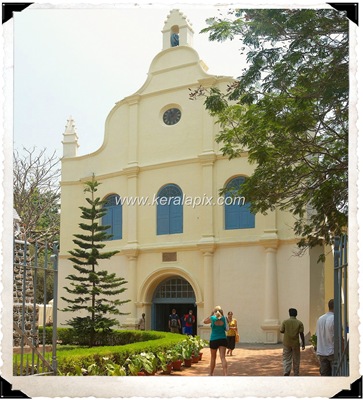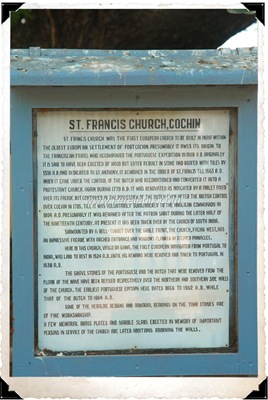Known to be the first European church in India located near Fort Kochi beach, Kerala.
Actual text of the above information board is given below:
 Photo ID: FKN_101 - Panorama Photo ID: FKN_101 - Panorama |
 Photo ID: FKN_098 Photo ID: FKN_098 |  Photo ID: FKN_099 Photo ID: FKN_099 |  Photo ID: FKN_100 Photo ID: FKN_100 |  Photo ID: FKN_102 Photo ID: FKN_102 |
Information board displayed at the church narrating the history:
 Photo ID: FKN_097 Photo ID: FKN_097 |
No comments:
Post a Comment